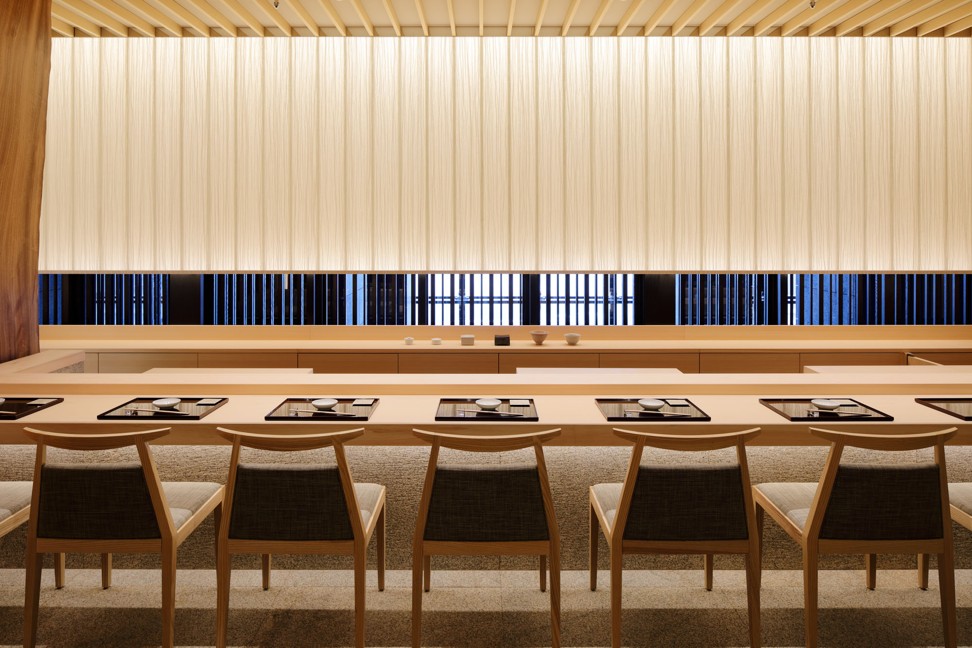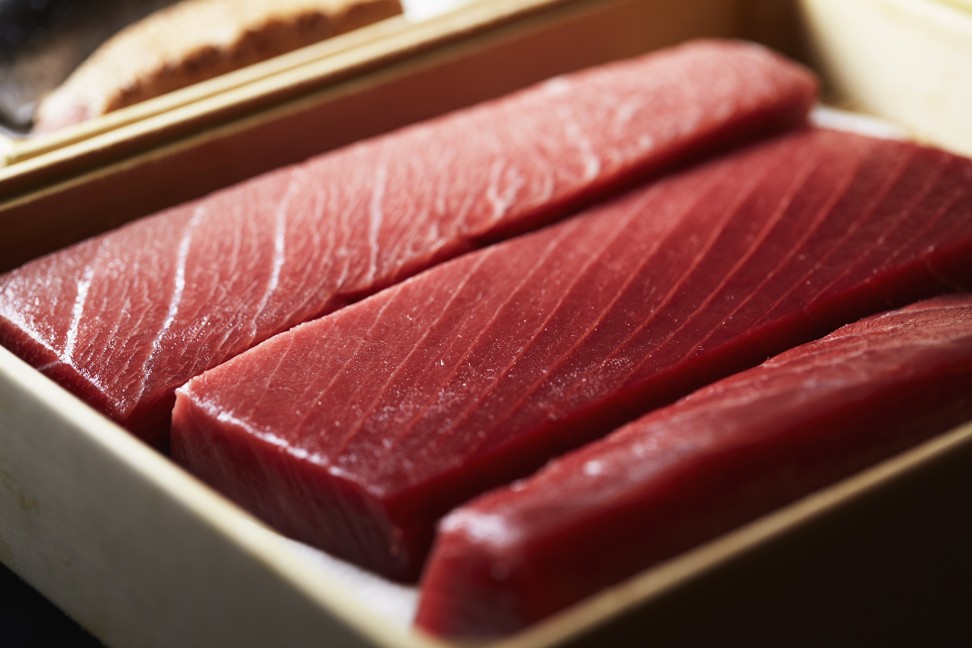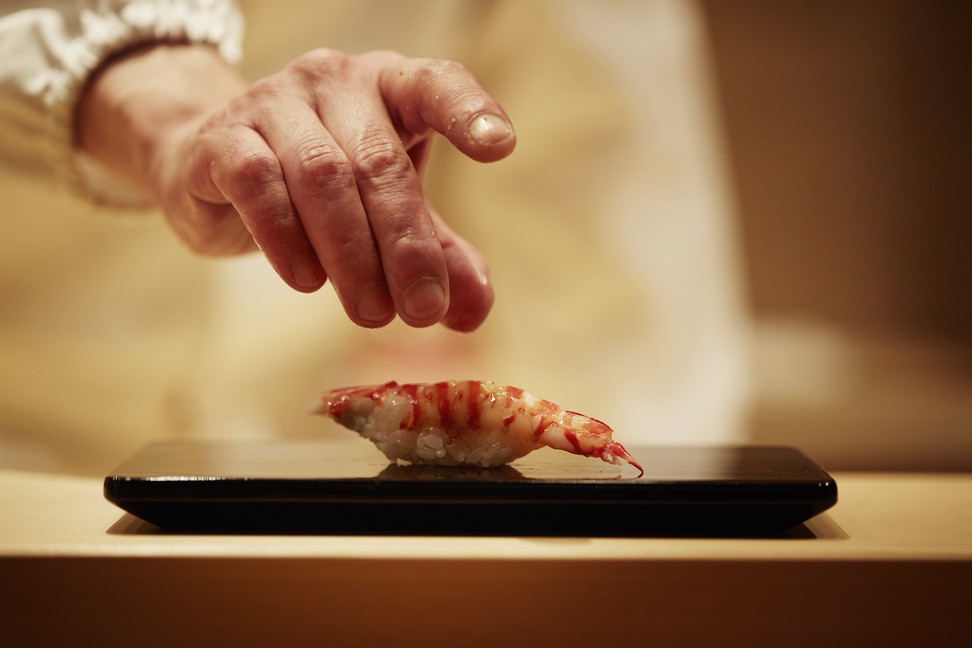Master chefs Musashi Hiroyuki and Hiraki Masakazu talk sushi, knives and the one ingredient they can't live without

High above the glistening lights of Tokyo with views that stretch to Mount Fuji, I sit down with two master chefs, at the Aman Hotel in Tokyo to ask a renowned Japanese sushi chef and Italian chef what they think of each other’s food?
Hiraki Masakazu spent 17 years learning how to turn fresh seasonal produce into delicious cuisine in the kitchens of Italy. He returned to Tokyo as executive chef of Arva where he curates mouthwatering Italian dishes.
With 30 years’ experience and a Michelin star under his belt, Musashi Hiroyuki firmly believes in preserving tradition.
He sees authentic and exacting detail as an important part of sharing Tokyo’s time-honoured Edomae sushi culture. After 12 years of running his own sushi-ya in Aoyama, the famous master sushi chef will have his own restaurant, Musashi by Aman, in a luxury hotel.
Q. How do you define your cuisine?
Hiraki: It’s important to seek inspiration whether by travelling, or by conversing with different chefs. I seek knowledge to stay innovative. I talk to farmers about the soil and weather to understand how the classical dishes evolved regionally.
Once I understand the foundation I can create something original from that. I like to go to local markets because it is important for great chefs to go to the source and know the local ingredients in depth, the way they are used, then innovate.
Musashi: Edo was the original name for Tokyo (1603-1868). Edomae sushi firstly refers to all the fish that were found in Tokyo Bay. In those days there was a large variety and the sushi was served as a fast food from a kiosk.
However, there was no refrigeration or fast transport. So Edomae-style sushi was born out of necessity. It was a way to preserve the fish in vinegar, shoyu sauce, boiling and salting. All these methods are a part of traditional Edomae style that we still serve today.
Q. What is one ingredient you could not live without?
Hiraki: Olive oil. It is the foundation of Italian cuisine. There are many qualities and many ways to use it.
In general, for meat [choose] a more robust oil from southern Italy. In central Italy, the oil has a green and fruity flavour, making it perfect for vegetables. For seafood, the more delicate oils from the north of Italy [are the best choice].
Musashi: The most important ingredient in sushi is the rice – and then salt and shoyu. The best rice is from Akita. It has to be about one year old to get the best sticky-but-not-too-sticky consistency, and for the shari (sushi rice) to absorb the vinegar.
Q: What do they think of each other's cooking techniques?
Marinating
Sujime is the traditional Edomae art of using vinegar and salt to preserve silver-skinned fish or hikarimono, which lose freshness very quickly. This important technique is one of the defining points of a master sushi chef. All the details of the preparation are adjusted depending on the size and fattiness of the fish.
Musashi slices the fish, sprinkles salt from 30 centimetres (11 inches) above and leaves them to sit for 10 minutes. After this he carefully washes them in fresh water and soaks them in vinegar for a further 10 minutes. They are then refrigerated for at least one night.
Hiraki says: “There is a very similar Italian technique, also rooted in preserving the fish. The difference is the more precise attention to detail there is with Edomae sushi … The exact height the salt is sprinkled from, how many minutes the fish is salted and marinated.
“I watched Musashi-san as he closely observed each fish and adjusted his ‘sujime’ technique depending on the fish’s characteristics and even the temperature in this room.
“In Italian cuisine, all fish are salted and marinated in the same way because it is just one small part of the entire cooking process. After we vinegar the fish, we put in the oil with herbs, then mix together with vegetables.”
Rice
The smell of Hiraki’s delicious winter fungi risotto with shavings of white truffle is a bit distracting.
Musashi says: “It is rice; but it is treated and considered completely differently. The rice grains are bigger and I noticed that for chef Hiraki, the most important thing, was to cook the rice ‘al dente’.
“The rice was not washed meticulously like we do with sushi. And Hiraki then sautéed it with olive oil to coat the surface of each grain to prevent too much absorption of water while cooking. Japanese sushi rice is always fully cooked.
“The texture is moderated by the amount of salt and vinegar added after the sushi is cooked and by how the temperature of the rice is controlled by fanning.”
Hiraki says: “In Musashi-san’s sushi I taste and feel the outline of each grain of rice, but this is accomplished in an entirely different way.”
Knifework
There is no doubt that Hiraki is amazed and inspired by the precision and skill with which Musashi prepares the fish.
Hiraki says: “In Italian cuisine the fish is not eaten raw, so the focus is on the cooking not the preparation. But for sushi, I see that how the fish is cut affects not only the look but also the flavour and the sensation in my mouth.
“I loved the balance between the rice and the fish … and also the balance of the entire meal. It is interesting because Musashi-san is quite an easy-going person in private. But with his sushi, every detail is important with so much thought put into it.”
Want more stories like this? Sign up here. Follow STYLE on Facebook, Instagram and Twitter

Musashi and Hiraki sit down to discuss their cuisine, cooking techniques and the importance of inspiration




